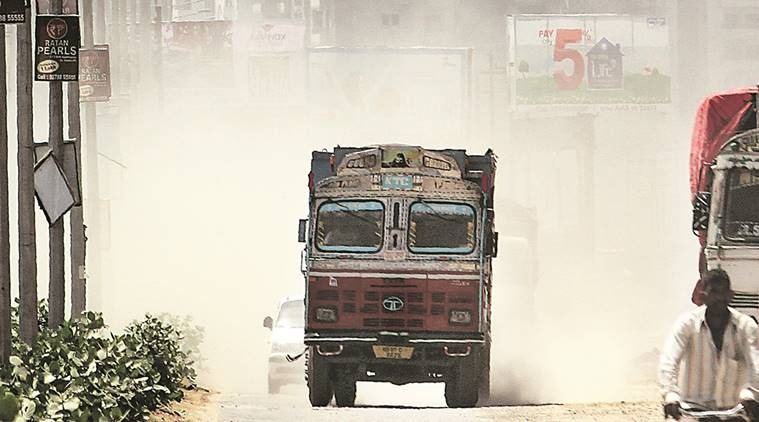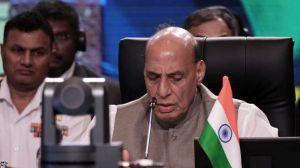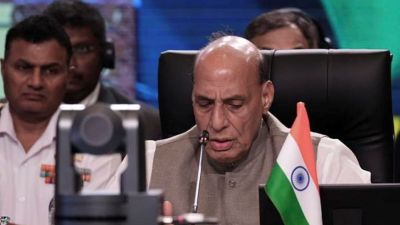Stay updated with the latest - Click here to follow us on Instagram
‘Housing for all by 2022’ first year report: Room for improvement
The Pradhan Mantri Awas Yojana, launched on June 25, 2015, seeks to address housing shortage of over 20 million units. However, only 19,255 houses have been built across all states during its first year
 Dust pollution seen at a construction site at Noida Extn. in Noida on April 5th 2015. Express photo by Ravi Kanojia.
Dust pollution seen at a construction site at Noida Extn. in Noida on April 5th 2015. Express photo by Ravi Kanojia.
While the government embarked upon the mission ‘Housing for All by 2022’ and estimated to address housing shortage of over 20 million units, the first year has not been a good one in terms of achievements. Under the Pradhan Mantri Awas Yojana (PMAY) that was launched on June 25, 2015, only 19,255 houses have been built across all states in the first year (till July 15, 2016). There is also a significant drag in projects hitting the ground despite getting having received the required approvals.
Responding to a Parliament question on the progress of PMAY, the data made available by Rao Inderjit Singh, Minister of State for Housing & Urban Poverty Alleviation, shows that while 864 projects involving 7,28,840 houses have received the approvals, work is progressing only on 1,07,687 units (less than 15 per cent of approved projects). Even on the front of credit availability, the progress is very slow as only 7,180 households have received the benefits of funding under credit-linked subsidy scheme (CLSS).
Presenting the progress report in Parliament, the minister, in his response, said that while the mission aims to provide assistance to states/UTs in addressing the housing requirement of the slum dwellers and urban poor, no targets were fixed for construction of houses during the first year of the mission. However, some states have clearly taken the lead.
Gujarat, Rajasthan and Karnataka take the lead
While there has not been much progress overall, a few states have done relatively well. Karnataka, Rajasthan and Tamil Nadu top the list in terms of number of houses for which construction has been completed and the three account for 10,555 units or 55 per cent of the total housing units completed during the year. Gujarat and Uttar Pradesh occupy the fourth and fifth spot. On the contrary there are some prominent states that failed to make any notable contribution to the mission. While Maharashtra and Andhra Pradesh did not build a single housing unit in the first year, Kerala built only 9 housing units during the year. Punjab, Himachal Pradesh and Telangana also failed to open their account.
In terms of housing units that are under-construction, Gujarat is far ahead of all other states and accounts for one-third of the total number of houses that are currently in any stage of construction. Out of the total 1,07,687 units under progress, Gujarat alone accounts for 35,640 units. Other than this, Gujarat also built 2,160 houses in the first year of the mission.
In terms of project approvals, Tamil Nadu and West Bengal are clear leaders. While Tamil Nadu has received approvals for 193 projects (38,534 units), West Bengal received approvals for 111 projects (74,880 units). In contrast, Maharashtra received approvals
for only 10 projects but these account for more than 1 lakh housing units to be built. The data, however, shows that work has not started even on a single housing unit till July 15, 2016.
In terms of executing approved projects, Rajasthan beats all states. Out of the 12,307 units for which it received approval, work has started on 11,288 units (92 per cent). Other states that stand high on efficiency are Karnataka, Gujarat and Tamil Nadu as they have initiated work on 55 per cent, 53 per cent and 42 per cent of the units, respectively, for which they have received approvals.
Though West Bengal holds the top rank in terms of project approvals, it lags significantly in executing projects on the ground. The state has started work on only 9 per cent of the units that it has received approvals for. Even in the first year of the mission, the state built only 178 housing units.
While the government has also provided credit flow to the housing needs of urban poor through credit-linked subsidy scheme, only 7,180 households have benefitted from the scheme and the subsidy amount disbursed by banks amount to only Rs 120 crore.
Even in this case Gujarat comes on top as the number of beneficiaries of CLSS scheme in the state stood at 2,712 or 37 per cent of the total beneficiaries across the country. Maharashtra comes next with 1,552 beneficiaries in the year.
Under the scheme, the benefits are provided to individuals (in the economically weaker section and low income group) seeking housing loan. The interest rate subsidy provided is at the rate of 6.5 per cent for a tenure of 15 years.
The credit-linked subsidy is also only for loan amounts of up to Rs 6 lakh and additional loans beyond Rs 6 lakh, if any, would be at nonsubsidised rate. The other conditions are that for EWS, the annual household income should be up to Rs 3 lakh and the house size should be up to 30 sq. mt. In case of LIG, the annual household income should be between Rs 3 lakh and Rs 6 lakh and the house size should be up to 60 sq.mt.
Experts in the industry feel that the pace is very slow and projects are not coming up for approvals. Even in cases where approvals are coming the project is not taking-off as the demand remains low. Some say that the government has not done the categorisation properly and has applied the same rules for both metros and small cities.
“Nobody likes to be christened as EWS/LIG. Putting a cap of 60 sq mt as an eligibility criteria is not working as in
tier II and tier III cities almost everything is more than 60 sq mt and they don’t qualify in the affordable category. If the government wants to stick to 60 sq mt as the definition then they should make it only for Delhi and Mumbai. For other places it should be 100 sq mt,” said the home loan head of a state-owned bank.







